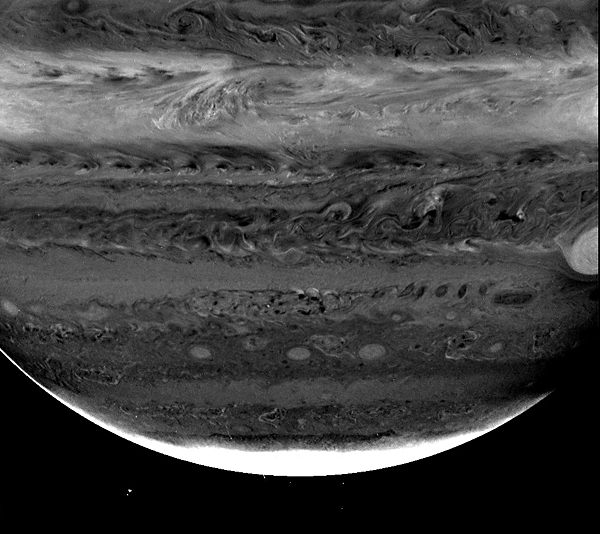

Cassini's cameras come equipped with filters that sample three wavelengths where methane gas absorbs light. These are in the red at 619 nanometer (nm) wavelength and in the near-infrared at 727 nm and 890 nm. Absorption in the 619 nm filter is weak. It is stronger in the 727 nm band and very strong in the 890 nm band where 90 percent of the light is absorbed by methane gas. Light in the weakest band can penetrate the deepest into Jupiter's atmosphere. It is sensitive to the amount of cloud and haze down to the pressure of the water cloud, which lies at a depth where pressure is about 6 times the atmospheric pressure at sea level on the Earth). Light in the strongest methane band is absorbed at high altitude and is sensitive only to the ammonia cloud level and higher (pressures less than about one-half of Earth's atmospheric pressure) and the middle methane band is sensitive to the ammonia and ammonium hydrosulfide cloud layers as deep as two times Earth's atmospheric pressure.
The most prominent feature seen in all three filters is the polar stratospheric haze that makes Jupiter bright near the pole. The equatorial band is also very bright in the strong 890-nm band and to a lesser extent in the 727 band but is subdued in the weak 619-nm band. These are high, thin, haze layers that are nearly transparent at wavelengths outside the methane absorption bands.
Another prominent feature is the Great Red Spot. About a third of it appears at the right-hand edge of the frame. It is a bright feature in methane absorption because it has extensive cloud cover reaching to high altitude. A wisp of high thin cloud can be seen trailing off its western rim at 727-nm and 727-nm bands.